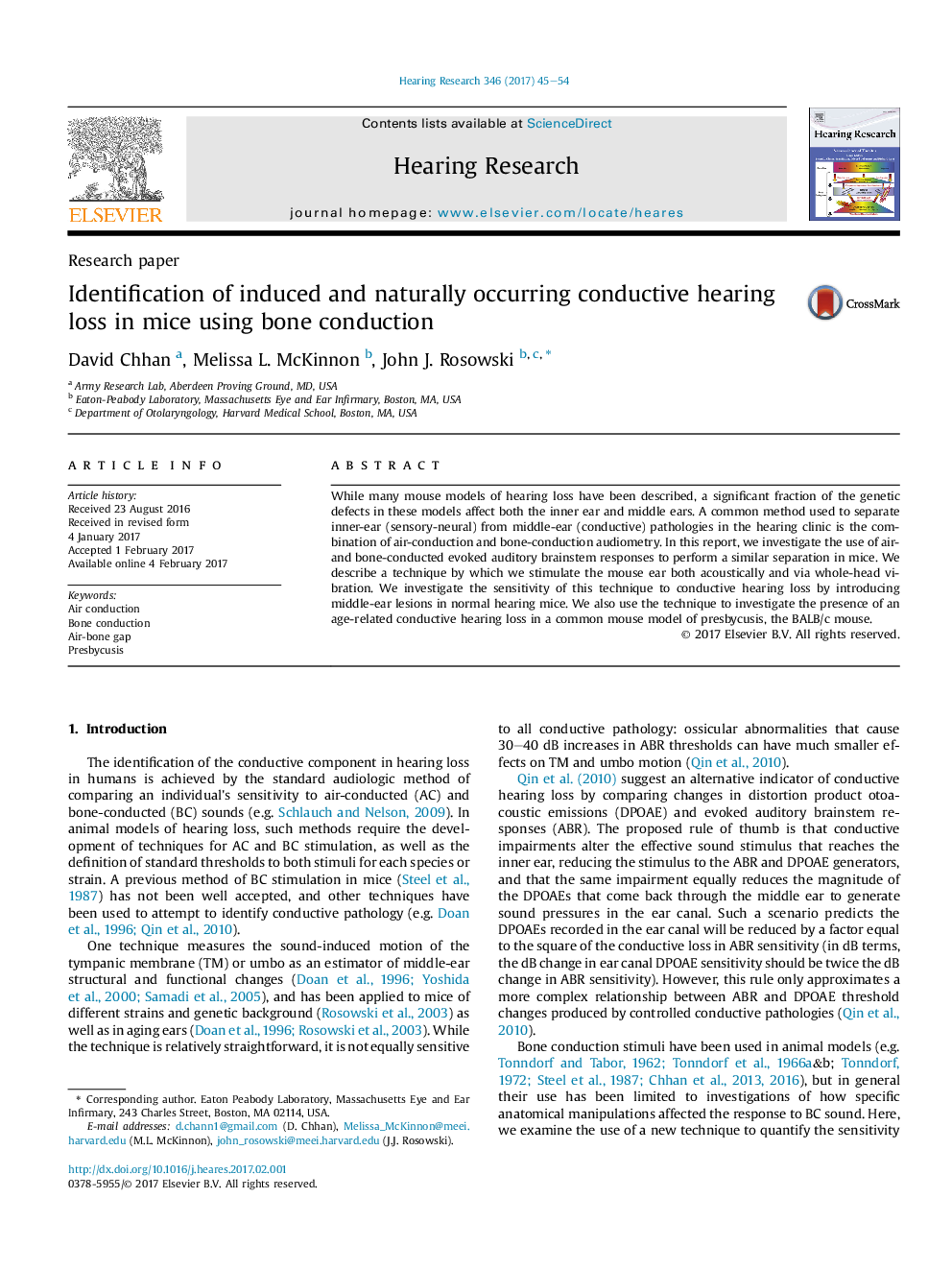| Article ID | Journal | Published Year | Pages | File Type |
|---|---|---|---|---|
| 5739482 | Hearing Research | 2017 | 10 Pages |
â¢ABR measurements in response to bone-conduction stimuli are described.â¢Bone-conduction responses are little affected by conductive lesions.â¢Air- and bone-conduction responses suggest a conductive presbycusis.â¢The presented bone-conduction techniques have a limited dynamic range.
While many mouse models of hearing loss have been described, a significant fraction of the genetic defects in these models affect both the inner ear and middle ears. A common method used to separate inner-ear (sensory-neural) from middle-ear (conductive) pathologies in the hearing clinic is the combination of air-conduction and bone-conduction audiometry. In this report, we investigate the use of air- and bone-conducted evoked auditory brainstem responses to perform a similar separation in mice. We describe a technique by which we stimulate the mouse ear both acoustically and via whole-head vibration. We investigate the sensitivity of this technique to conductive hearing loss by introducing middle-ear lesions in normal hearing mice. We also use the technique to investigate the presence of an age-related conductive hearing loss in a common mouse model of presbycusis, the BALB/c mouse.
